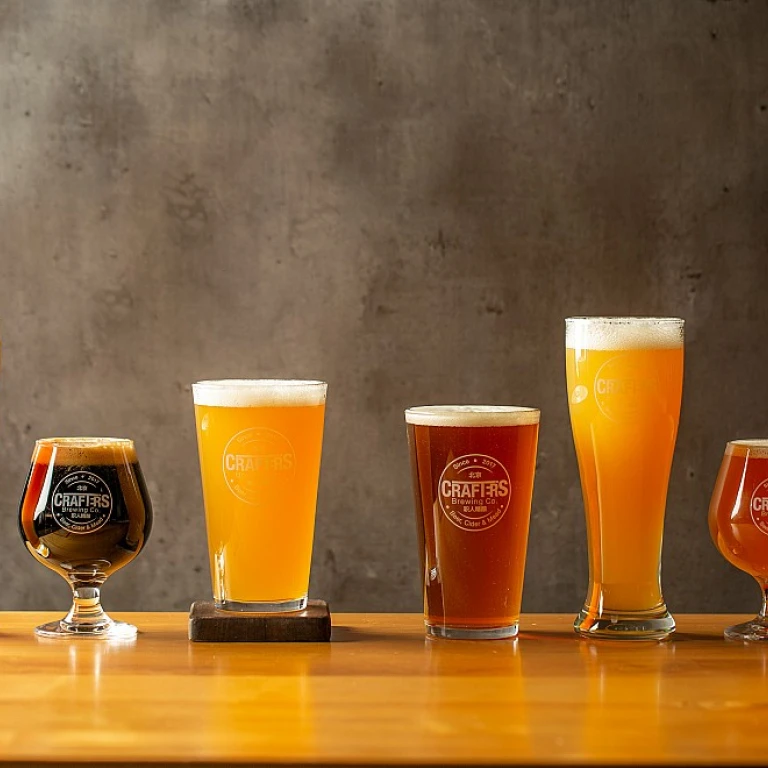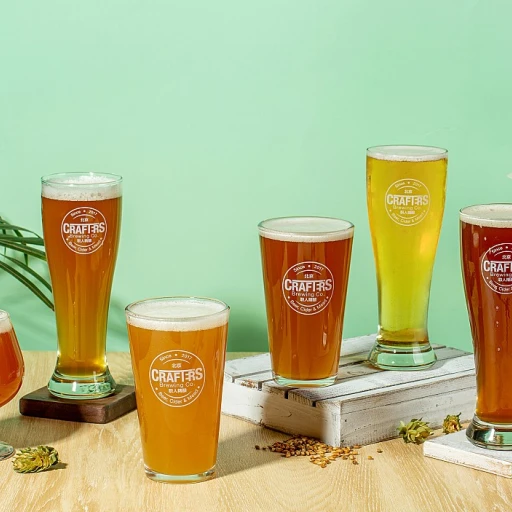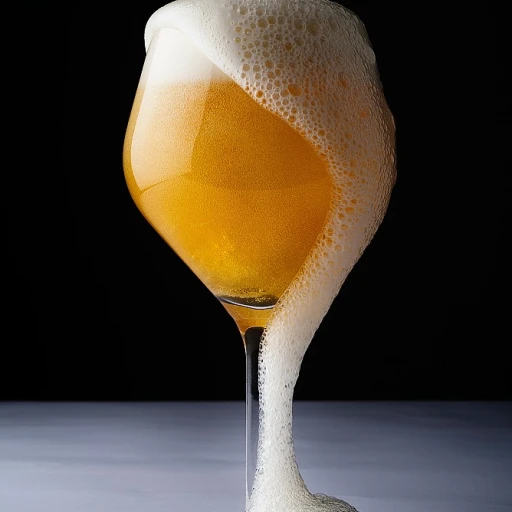
Apa beer : the american pale ale that started a movement
The roots of a craft beer revolution
American pale ale, often called APA, is more than just a style—it’s the spark that ignited the modern craft beer movement in the United States. Born from a desire to create something bold and different, APA took inspiration from classic British pale ales but added a uniquely American twist. Brewers experimented with local hops, giving APA its signature citrus and pine aromas that set it apart from traditional European beers.
As small breweries began to pop up across the country, APA quickly became a favorite among beer enthusiasts. Its approachable bitterness and refreshing character made it the perfect gateway for those curious about hoppy beers. The popularity of APA also paved the way for other innovative styles, like the American IPA, which you can read more about in this in-depth look at hop-forward flavors.
- APA’s influence is still felt today, with countless breweries putting their own spin on the style.
- It remains a staple in taprooms and bottle shops, loved for its balance and drinkability.
- Many beer fans credit APA with introducing them to the world of craft beer.
As you explore what makes APA unique and which breweries have made it famous, you’ll see how this style continues to shape the American beer landscape.
What makes apa beer stand out from other beer styles
Signature flavors and aromas
American pale ale (APA) stands out for its vibrant hop character balanced by a gentle malt backbone. Unlike its British predecessors, APA uses American-grown hops, which bring bold citrus, pine, and floral notes to the forefront. The result is a refreshing, crisp beer with a moderate bitterness that appeals to both new and seasoned craft beer fans.
Color and body
APAs typically pour a clear golden to deep amber color, with a frothy white head. The body is medium-light, making it easy to enjoy more than one. This lighter body, combined with lively carbonation, enhances the beer’s drinkability and showcases its hop-forward profile.
Comparing APA to other styles
- Versus IPA: While both styles use American hops, APAs are generally less bitter and lower in alcohol than India pale ales. This makes them more approachable for those exploring hop-forward beers.
- Versus English pale ale: APAs use American hops and malts, resulting in brighter, more pronounced flavors compared to the earthier, subtler notes of English versions.
- Versus amber ale: Amber ales have a stronger malt presence and a deeper color, while APAs focus on hop aroma and flavor with a lighter malt touch.
For those interested in how hop-forward beers can evolve, you might enjoy reading about the magic of Fairy Nectar IPA, which takes American hop character to new heights.
Famous apa beers and breweries you should know
Iconic American pale ales to try
- Sierra Nevada Pale Ale – Often considered the benchmark for the style, this beer from Sierra Nevada Brewing Co. helped define what an APA should taste like. Its balanced blend of citrusy hops and malt sweetness makes it a favorite among enthusiasts and newcomers alike.
- Deschutes Mirror Pond Pale Ale – Hailing from Oregon, Mirror Pond is known for its floral aroma and crisp finish. It showcases the classic Cascade hops, offering a refreshing and approachable profile.
- Goose Island Pale Ale – This Chicago-based brewery’s take on the APA is slightly maltier, with a subtle hop character. It’s a great example of how regional variations can influence the style.
- Oskar Blues Dale’s Pale Ale – One of the first craft beers to be canned, Dale’s Pale Ale is bold and hop-forward, with a robust flavor that stands out in the crowded APA landscape.
Breweries shaping the APA scene
- Sierra Nevada Brewing Co. – Their flagship pale ale is a staple in the craft beer world, inspiring countless brewers to experiment with American hops.
- Deschutes Brewery – Known for their commitment to quality and innovation, Deschutes has helped popularize the APA style on the West Coast.
- Goose Island Beer Co. – While now part of a larger brewing group, Goose Island’s early pale ales played a key role in bringing craft beer to a wider audience.
- Oskar Blues Brewery – Pioneers in canning craft beer, they’ve shown that APAs can be both portable and flavorful.
Many of these breweries offer tours and tastings, giving you a chance to experience their APAs fresh from the source. If you’re curious about how APA compares to other popular beer styles in terms of calories, check out this honest info for beer lovers for a helpful perspective.
How to enjoy apa beer : tastings, pairings, and experiences
Tips for tasting American pale ale
- Use the right glass: A tulip or nonic pint glass helps concentrate the hop aroma and allows you to appreciate the beer’s color and clarity.
- Check the temperature: Serve APA slightly chilled, around 45–50°F (7–10°C), to bring out its citrusy and floral notes without muting the flavors.
- Observe and smell: Before sipping, take a moment to notice the golden to amber hue and inhale the inviting aromas of hops and malt.
- Taste in small sips: Let the beer linger on your palate to experience the balance of bitterness, malt sweetness, and refreshing finish.
Pairing APA with food
- Grilled meats: The moderate bitterness and crisp finish of APA complement burgers, barbecue chicken, and sausages.
- Spicy dishes: APA’s citrusy hops can tame the heat in spicy tacos, buffalo wings, or Thai cuisine.
- Cheese: Try pairing with sharp cheddar or blue cheese for a delightful contrast.
- Seafood: The refreshing character of APA works well with fried fish, shrimp, or fish tacos.
Enjoying APA beyond the glass
- Beer tastings: Host a tasting with friends, featuring different APAs from local and national breweries to compare hop profiles and malt character.
- Brewery visits: Many breweries offer guided tastings and food pairings, giving you a deeper appreciation for the style’s versatility.
- Cooking with APA: Use APA in recipes like beer-battered fish or marinades to add a subtle hoppy kick.
Whether you’re new to American pale ale or a seasoned fan, these experiences can help you enjoy this iconic beer style to the fullest.
The future of apa beer in the united states
Trends shaping the next chapter of American pale ale
American pale ale continues to evolve, reflecting both tradition and innovation. Brewers are experimenting with new hop varieties, creating unique flavor profiles that appeal to a wide range of beer lovers. This experimentation keeps the style fresh and exciting, while still honoring the balanced, approachable character that made it popular in the first place.
Embracing local ingredients and sustainability
Many breweries are focusing on sourcing local malts and hops, supporting regional agriculture and reducing their environmental impact. This trend not only enhances the story behind each pint, but also brings subtle differences to the taste of APA beers from different parts of the country.
Sessionable options and creative twists
Session APAs and lower-alcohol versions are gaining popularity, offering drinkers flavorful options that are easy to enjoy over a longer period. At the same time, brewers are adding creative twists—think fruit infusions, dry-hopping techniques, or even barrel-aging—to keep fans intrigued.
Growing appreciation among new audiences
As craft beer culture expands, more people are discovering the approachable nature of American pale ale. Its versatility with food and its balanced profile make it a favorite for both newcomers and seasoned enthusiasts. Whether enjoyed at a brewery, paired with a meal, or at a tasting event, APA beer remains a cornerstone of the American craft beer scene, ready to adapt to the tastes of future generations.













